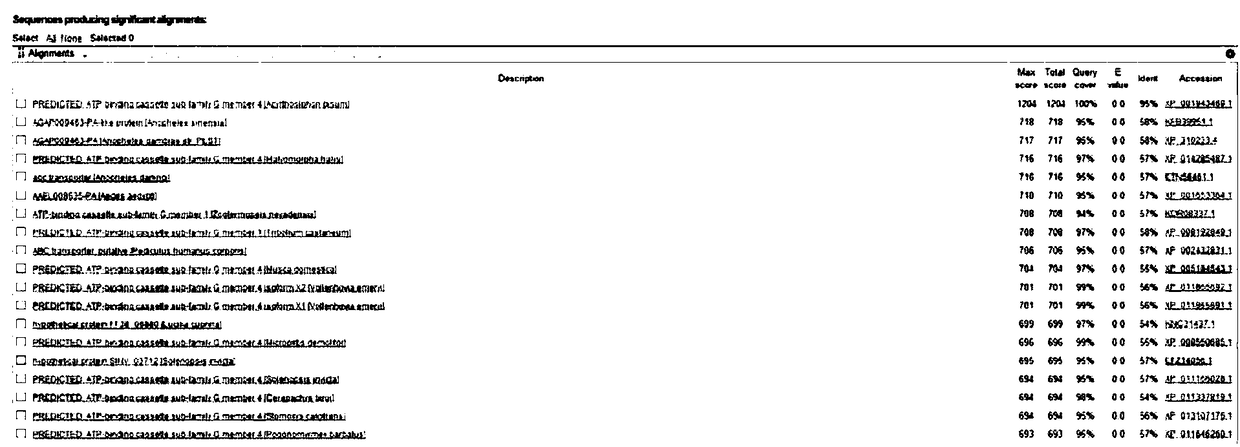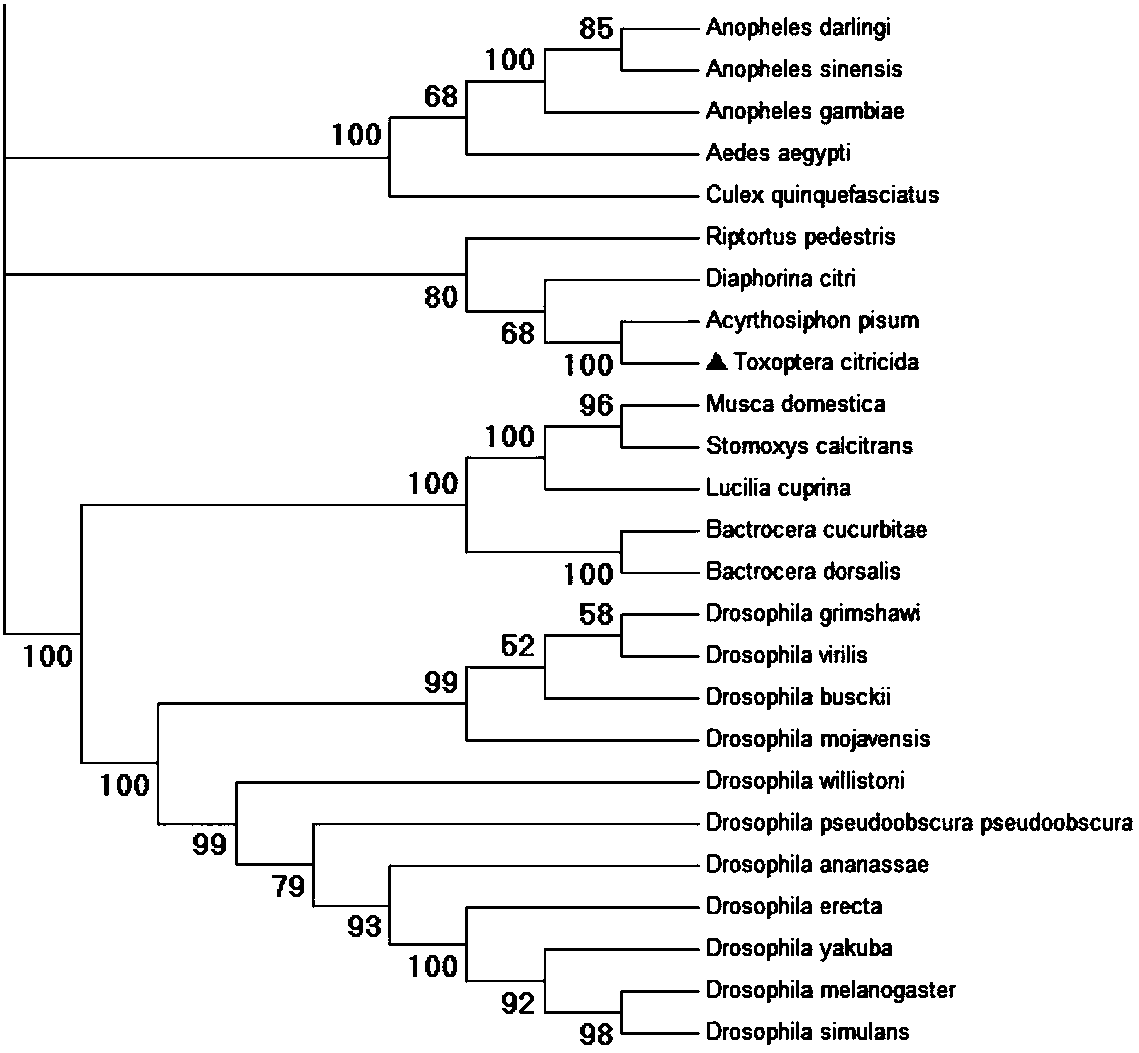The brown orange aphid abcg4 gene and its dsRNA
An orange aphid and brown technology, which is applied to the field of the brown orange aphid ABCG4 gene and its dsRNA, can solve the problems of unseen and little research on the brown orange aphid ABC transporter, and achieves the effects of high silencing efficiency and good application prospects.
- Summary
- Abstract
- Description
- Claims
- Application Information
AI Technical Summary
Problems solved by technology
Method used
Image
Examples
Embodiment 1
[0032] Embodiment 1, brown orange aphid ABCG4 gene sequence identification
[0033] 1) Find a possible ABCG4 Unigene sequence from the transcriptome data of the brown orange aphid (provided by the Key Laboratory of Entomology and Pest Control of Southwest University), and find a unigene sequence in the transcriptome through tBlastn.
[0034] 2) Use the RNA extraction kit RNeasy Plus Micro Kit to extract the total RNA of the brown orange aphid according to the instructions, and then use the reverse transcription kit Perfect real time RT reagent to reverse transcribe 1 μg of the total RNA into cDNA according to the instructions.
[0035] 3) Using the cDNA obtained above as a template, design full-length amplification primers, and use the upstream and downstream primers ABCG4-A and ABCG4-S for PCR amplification; the PCR conditions are: 95°C pre-denaturation for 3 minutes; 95°C denaturation for 30 seconds, 60°C Annealing for 10s, extension at 72°C for 2min, 35 cycles in total; ext...
Embodiment 2
[0041] Embodiment two, the synthesis of the dsRNA of ABCG4 gene of brown orange aphid
[0042] 1) According to the brown orange aphid transcriptome data (provided by the Key Laboratory of Entomology and Pest Control of Southwest University), design the upstream and downstream primers T7-ABCG4-S1 (as shown in SEQ ID NO: 4), T7- ABCG4-A1 (as shown in SEQ ID NO:5), synthetic primers, the primer sequences are respectively:
[0043] T7-ABCG4-S1:
[0044]TAATACGACTCACTATAGGGATGGGAAGTGTTTAACATG;
[0045] T7-ABCG4-A1:
[0046] TAATACGACTCACTATAGGGACATGCCAAATCTATTCCA.
[0047] 2) Use the RNA extraction kit RNeasy Plus Micro Kit to extract the total RNA of the brown orange aphid according to the instructions, and then use the reverse transcription kit Perfect real time RT reagent to reverse transcribe 1 μg of the total RNA into cDNA according to the instructions. The system is 20 μl, including: total RNA 1 μl (about 1 μg), 5×PrimeScriptBuffer 4 μl, PrimeScriptRT Enzyme Mix I 1 μl, O...
Embodiment 3
[0055] Embodiment 3, the dsRNA of brown orange aphid ABCG4 gene is introduced into brown orange aphid:
[0056] use as image 3 The device shown is fed dsRNA to the brown orange aphid, and the operation is as follows:
[0057] 1) Take a clean 50mL centrifuge tube, cut off the conical bottom of centrifuge tube 1 with scissors, take 250μl PCR tube 2 and cut off the bottom of the tube, use double-sided tape to connect the bottom of PCR tube 2 and the cap of centrifuge tube 1 The inner walls are glued together so that the PCR tube 2 is set in the centrifuge tube 1;
[0058] 2) Extend the pipette gun from the bottom of the PCR tube 2 to inject the dsRNA solution prepared above, and place the centrifuge tube 1 upright with the bottom up;
[0059] 3) Take fresh citrus shoots 3, wash them with nuclease-free water and absorb excess water, then insert them into PCR tube 2, then wrap the PCR tube 2 with sealing glue and cut off the gap left by the bottom of the tube to prevent subseque...
PUM
 Login to View More
Login to View More Abstract
Description
Claims
Application Information
 Login to View More
Login to View More - R&D
- Intellectual Property
- Life Sciences
- Materials
- Tech Scout
- Unparalleled Data Quality
- Higher Quality Content
- 60% Fewer Hallucinations
Browse by: Latest US Patents, China's latest patents, Technical Efficacy Thesaurus, Application Domain, Technology Topic, Popular Technical Reports.
© 2025 PatSnap. All rights reserved.Legal|Privacy policy|Modern Slavery Act Transparency Statement|Sitemap|About US| Contact US: help@patsnap.com



